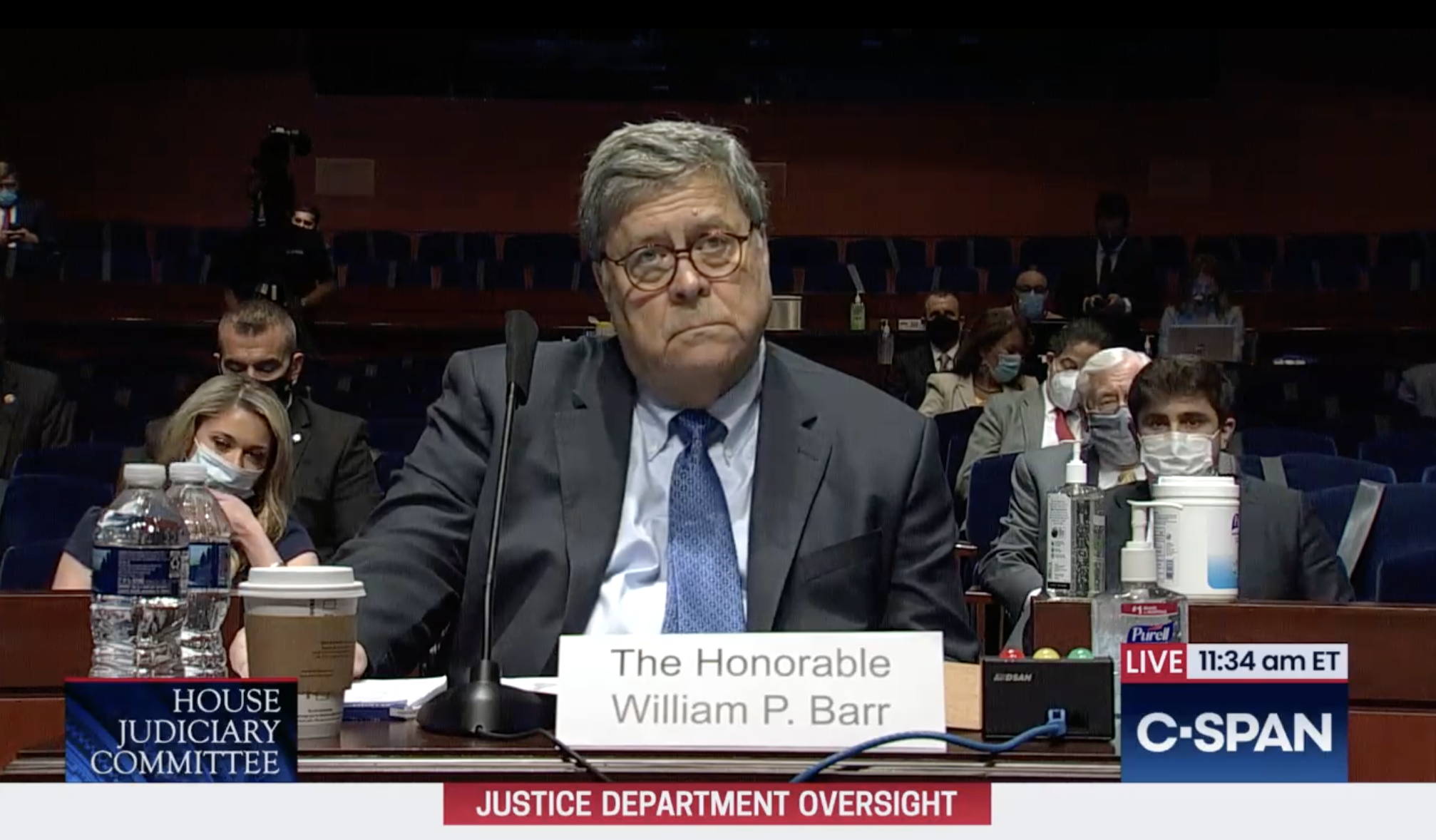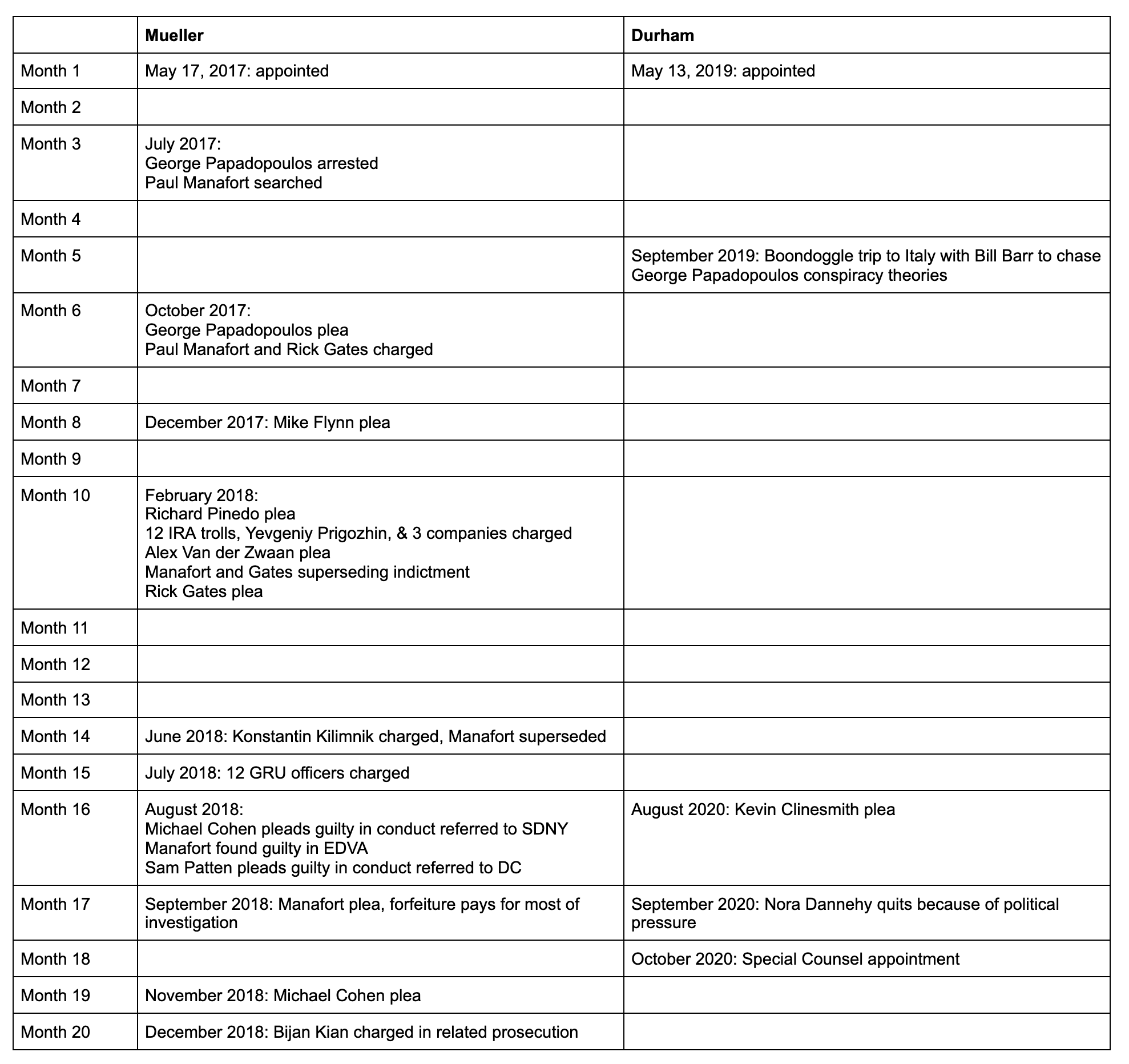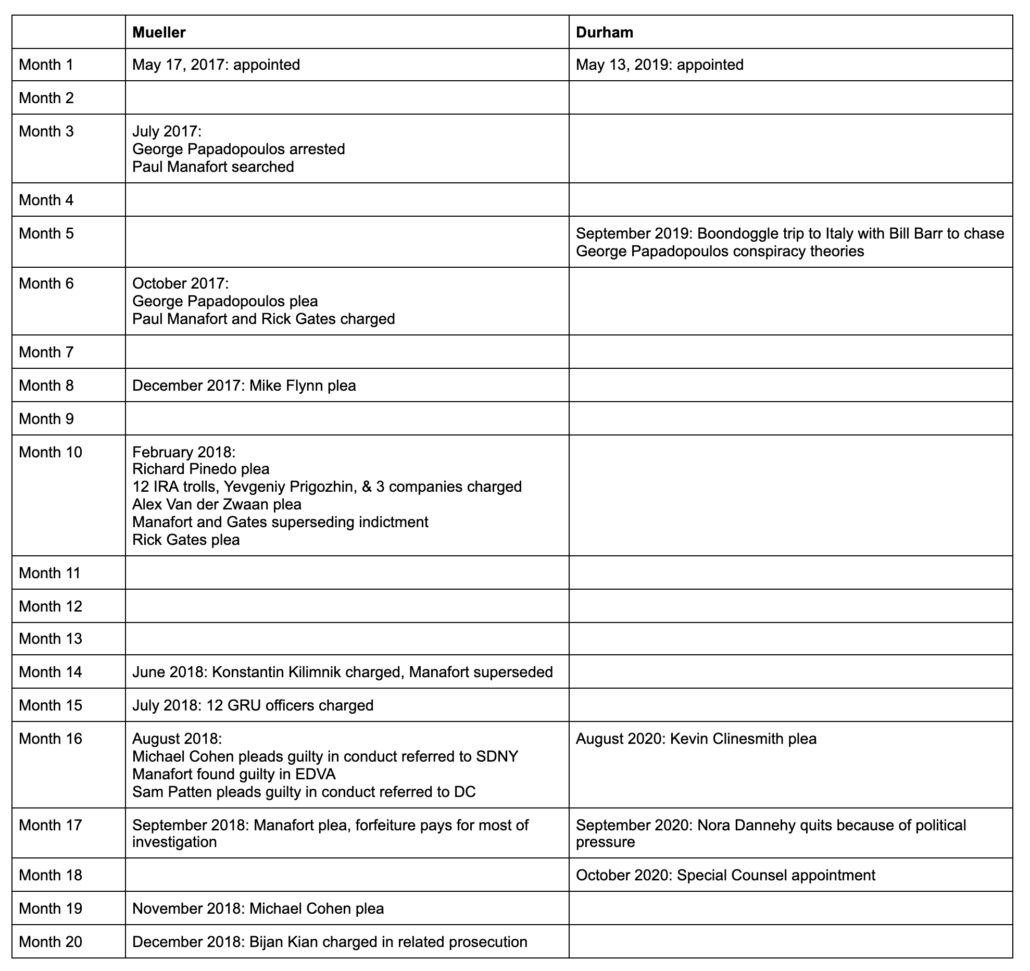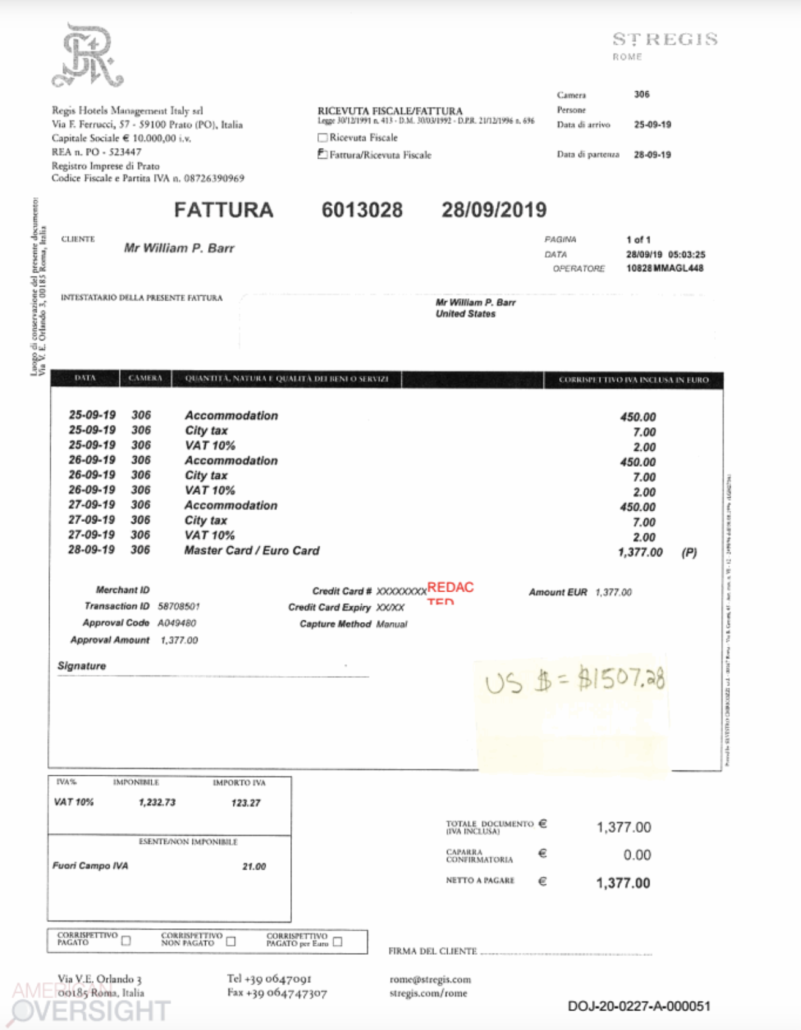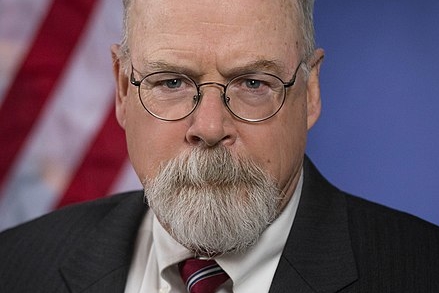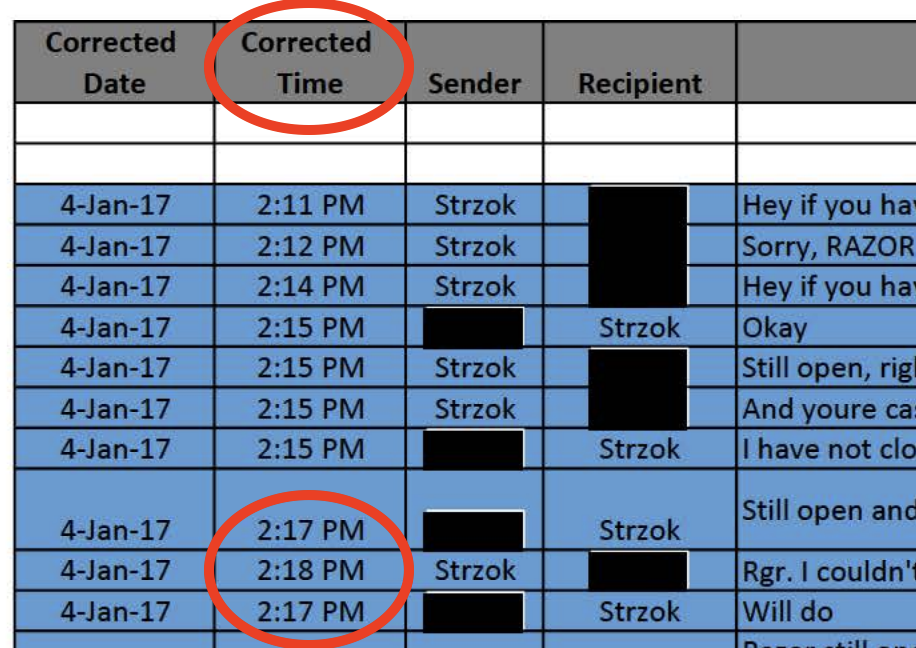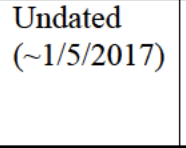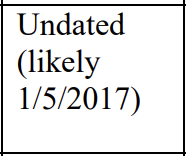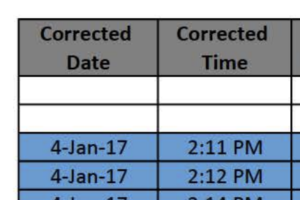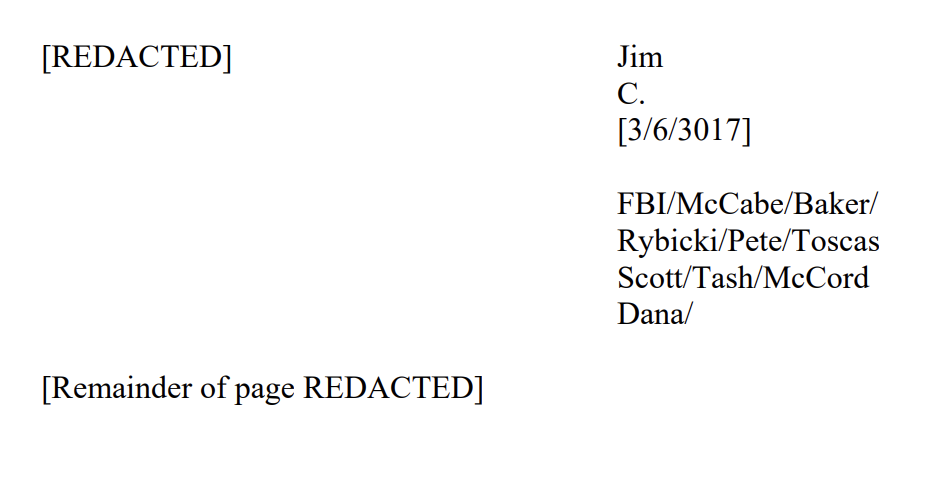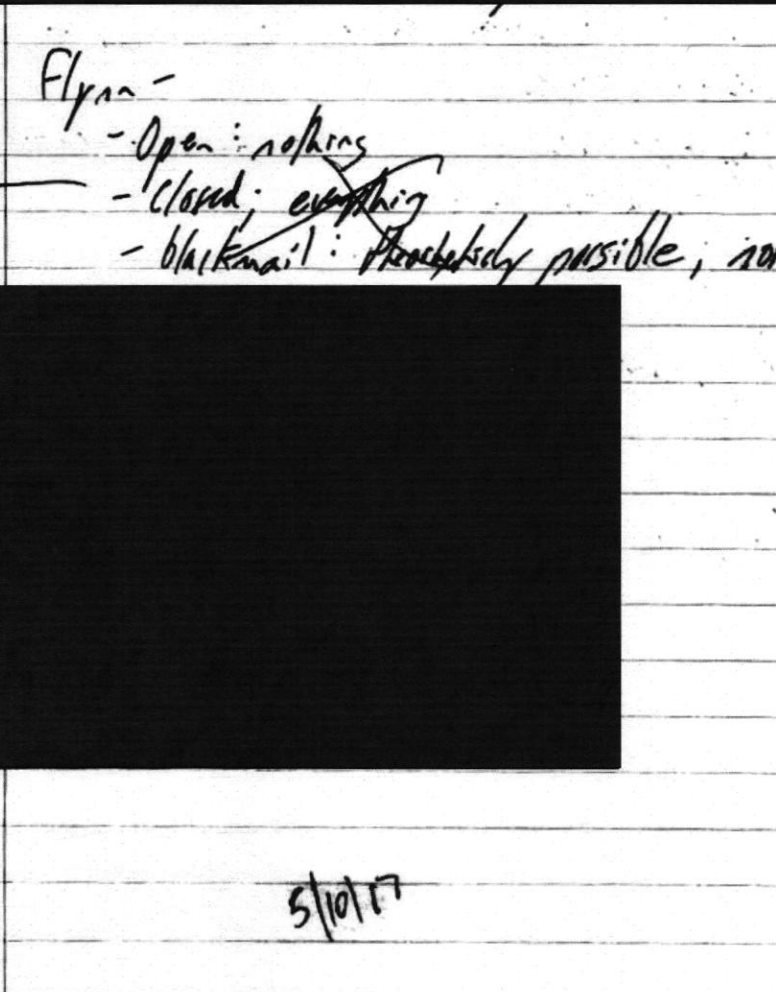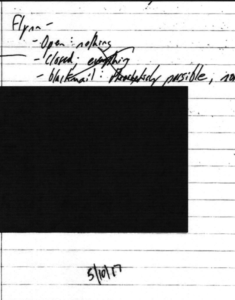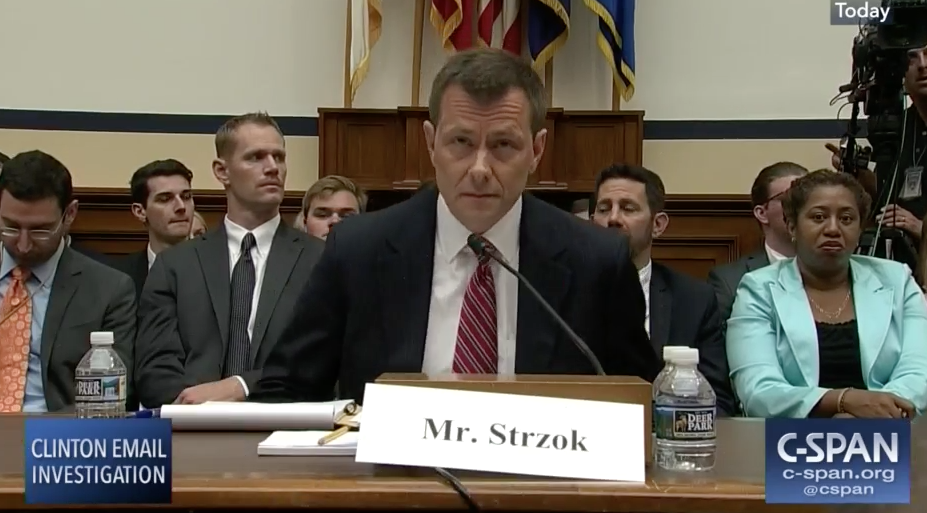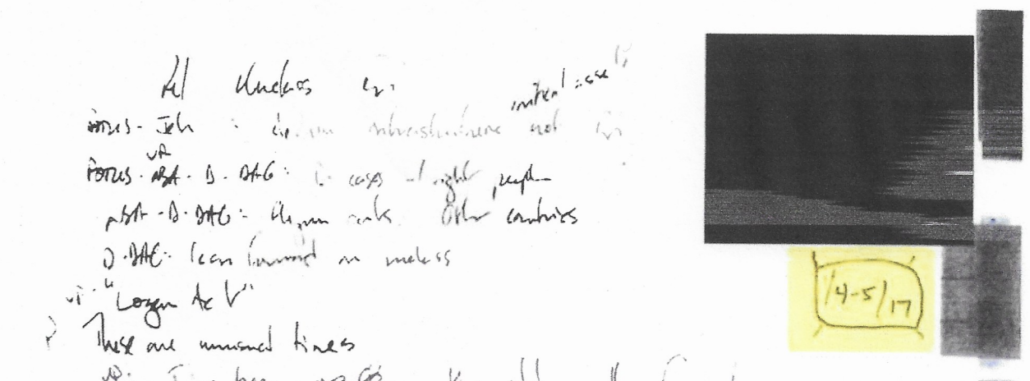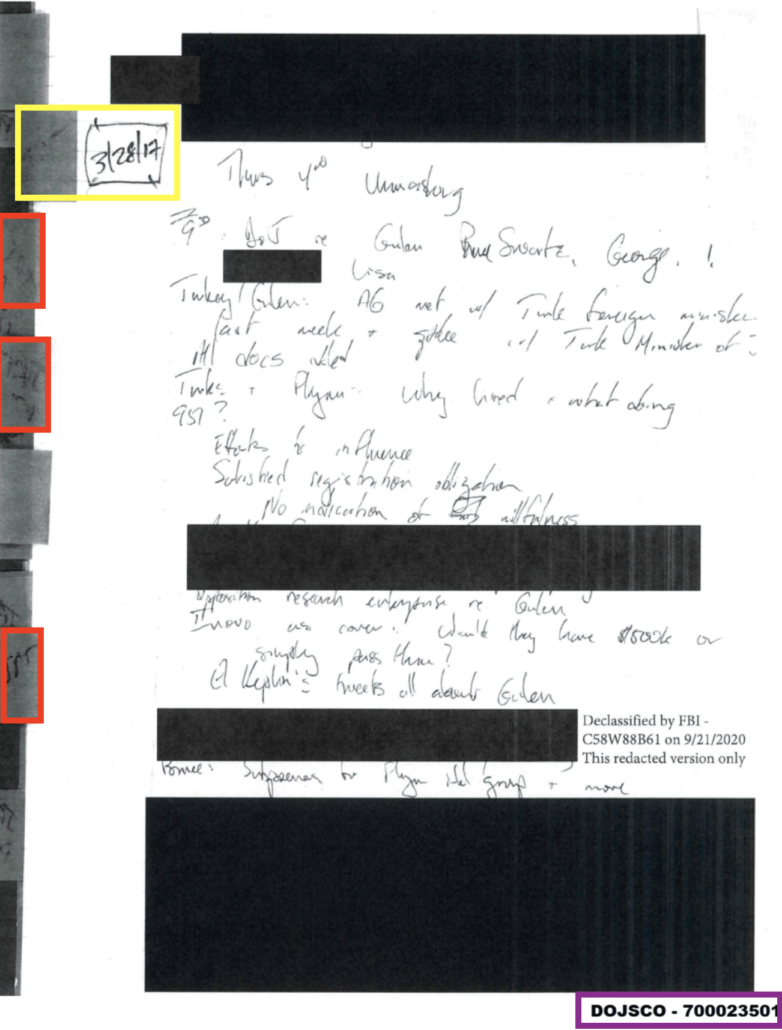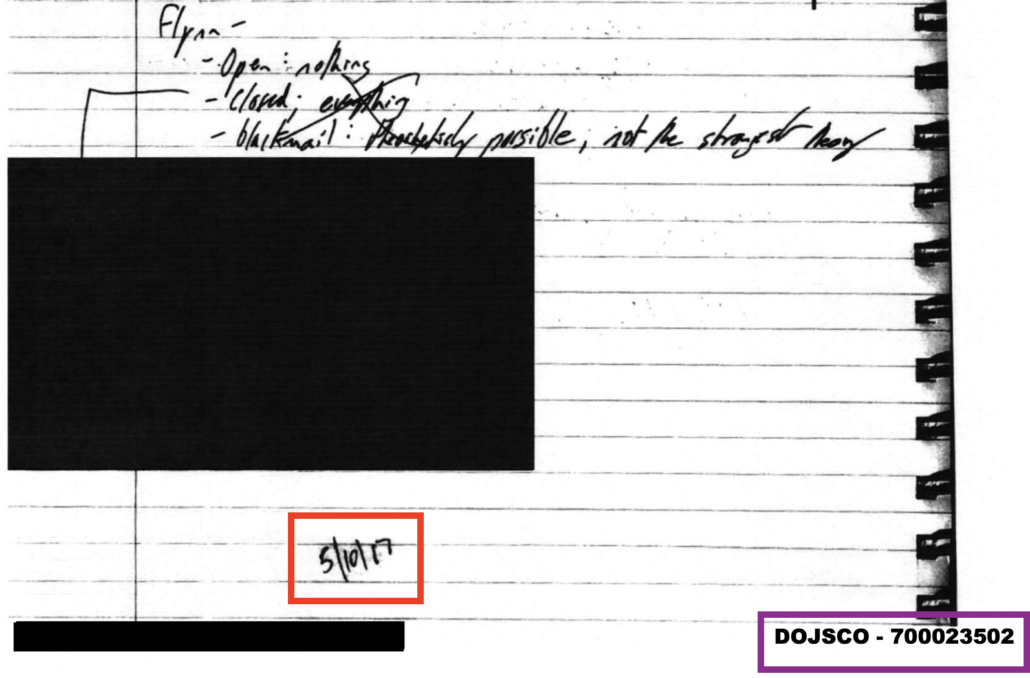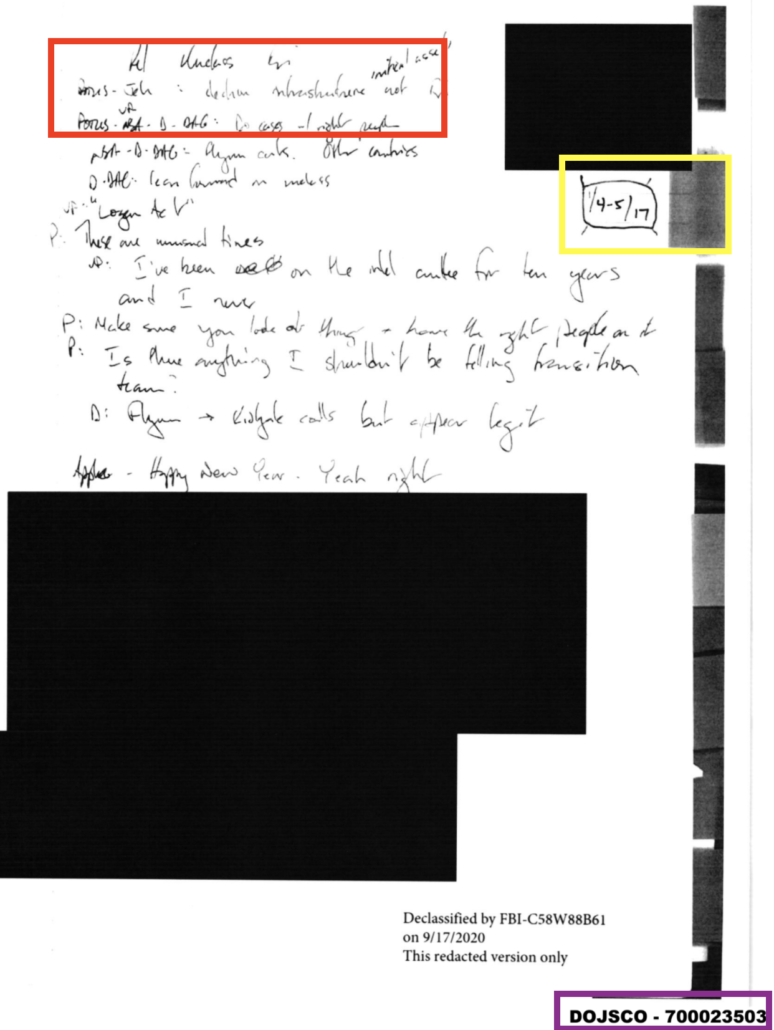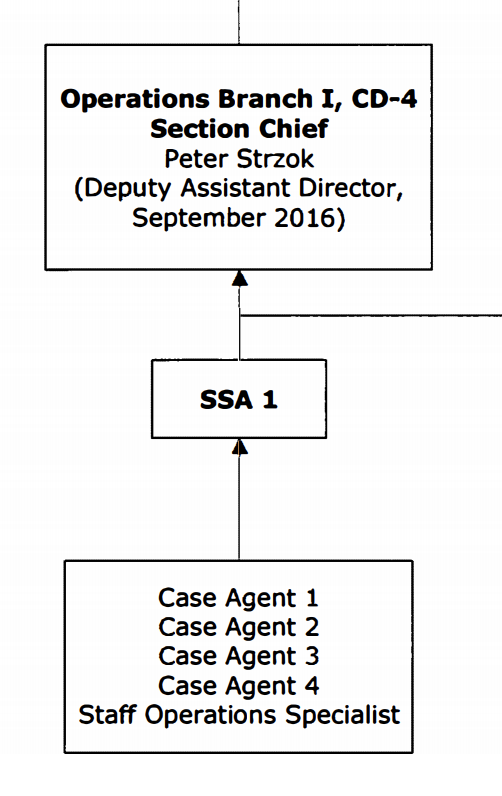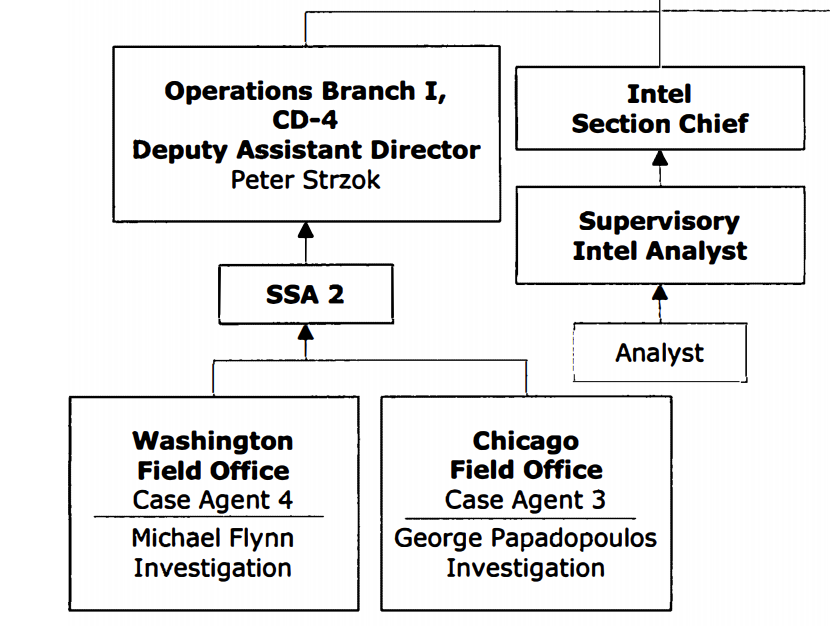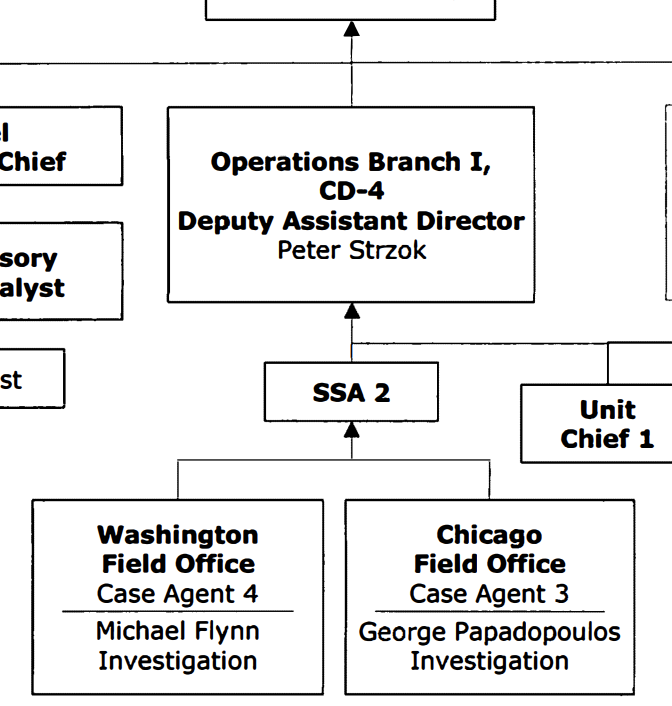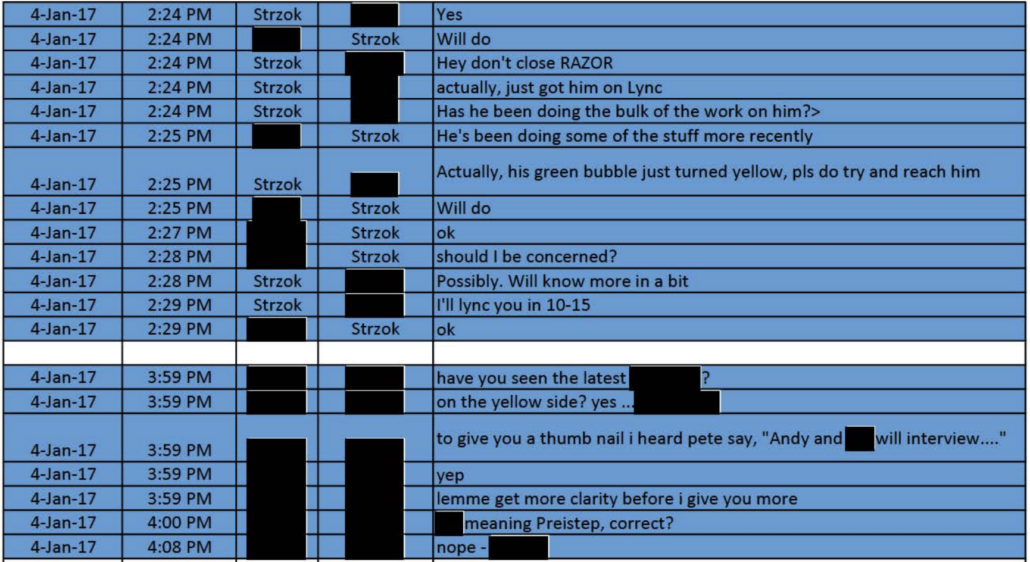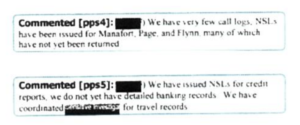Billy Barr Makes Excuses for His C- Durham Investigation Report Card
Either Billy Barr didn’t believe his bullshit would withstand even the obsequious questioning of Pierre Thomas or Pete Williams, or he felt the need to re-set the expectations for the Durham investigation that he set sky high when it started, because one of his first exit interviews was with WSJ’s propagandist Kim Strassel.
There’s the typical propaganda in here: Strassel’s attempt to claim all the politicized decisions he made were instead brave tough choices and she reports Barr’s admission that he came in to end the Russian investigation without noting that, in the past, he admitted when he came in he didn’t know anything about.
But there’s an interesting framing that suggests Barr knows he badly oversold his claims about the Mueller investigation and the FBI investigation that led to it, and oversold his Durham investigation even more.
Of the Russian investigation, Barr first claims, as fact, that a small group of people used the Russian investigation to topple the Trump “administration,” ignoring the illogic of that claim, since had they really wanted to thwart Trump, they would have done so during the election.
He reminds me why he took the job in the first place: “The Department of Justice was being used as a political weapon” by a “willful if small group of people,” who used the claim of collusion with Russia in an attempt to “topple an administration,” he says. “Someone had to make sure that the power of the department stopped being abused and that there was accountability for what had happened.” Mr. Barr largely succeeded, in the process filling a vacuum of political oversight, reimposing norms, and resisting partisan critics on both sides.
A paragraph later, Barr says that Mueller should have done the work he claims Durham is doing, by refusing to take in garbage (we’ve already seen abundant evidence that Mueller chased down disinformation, including the Steele dossier, as disinformation).
Mr. Barr says Mr. Durham’s appointment should not have been necessary. Mr. Mueller’s investigation should have exposed FBI malfeasance. Instead, “the Mueller team seems to have been ready to blindly accept anything fed to it by the system,” Mr. Barr says, adding that this “is exactly what DOJ should not be.”
In-between the two, Barr reiterated his bullshit claim that there was no evidence of “collusion.”
Mr. Barr describes an overarching objective of ensuring that there is “one standard of justice.” That, he says, is why he appointed U.S. Attorney John Durham to investigate the FBI’s 2016 Crossfire Hurricane probe. “Of course the Russians did bad things in the election,” he says. “But the idea that this was done with the collusion of the Trump campaign—there was never any evidence. It was entirely made up.” The country deserved to know how the world’s premier law-enforcement agency came to target and spy on a presidential campaign.
Ignore for a second that a passage of the Mueller Report that Barr stalled to declassify until the height of the election showed that Mueller referred the investigation into whether Roger Stone conspired with Russia to the DC US Attorney, ignore that Paul Manafort lied about what he and his partner the Russian spy were doing, ignore that Barr and Trump will attempt to make both of those ongoing investigations go away with pardons issued in minutes or days.
Barr suggests that Mueller’s conclusion that he didn’t have enough evidence to charge a conspiracy equates to claims of “collusion” being “entirely made up.” That is, if there’s not enough evidence to charge a crime, then even the lower level non-crime of “arglebargle” didn’t happen, even though SSCI staffers said it did.
So, for the Mueller investigation, Barr suggests no garbage should come in, and if no indictments (aside from the 30 or so that did) come out, then there was nothing to see there.
From there, Barr proceeds to make two paragraphs of excuses as to why Durham has found nothing in the same 20 months that Mueller indicted over 30 people, 3 corporations, and paid for much of the investigation.
Mr. Durham hasn’t finished his work, to the disappointment of many Republicans, including the president, who were hoping for a resolution—perhaps including indictments—before the election. Mr. Barr notes that Mr. Durham had to wait until the end of 2019 for Inspector General Michael Horowitz to complete his own investigation into the FBI’s surveillance. Then came the Covid lockdowns, which suspended federal grand juries for six months. Mr. Durham could no longer threaten to subpoena uncooperative witnesses.
“I understand people’s frustration over the timing, and there are prosecutors who break more china, so to speak,” Mr. Barr says. “But they don’t necessarily get the results.” Mr. Durham will, and is making “significant progress,” says Mr. Barr, who disclosed this month that he had prior to the election designated Mr. Durham a special counsel, to provide assurance that his team would be able to finish its work. The new designation also assures that Mr. Durham will produce a report to the attorney general. Mr. Barr believes “the force of circumstances will ensure it goes public” even under the new administration.
Again, Durham has brought one indictment in the time that Mueller had indicted 33 people (and even the least-politicized investigation into Hunter Biden has gone on longer than the entire Mueller investigation). Which maybe explains why Barr offers up excuses why Durham hasn’t found anything except what Michael Horowitz found for him, the Kevin Clinesmith document alteration.
He offers more, later, but not before he uses a different tack to explain away the futility of his examination. He explains, in passing, that the scope has gotten smaller. He doesn’t mention something he has already admitted in the past — that Durham spent a lot of time (on boondoggle trips to Europe, Barr doesn’t say) chasing down and disproving George Papadopoulos’ conspiracy theories. He does, however, confess that Durham determined before October that the CIA didn’t just make shit up.
The biggest news from Mr. Durham’s probe is what he has ruled out. Mr. Barr was initially suspicious that agents had been spying on the Trump campaign before the official July 2016 start date of Crossfire Hurricane, and that the Central Intelligence Agency or foreign intelligence had played a role. But even prior to naming Mr. Durham special counsel, Mr. Barr had come to the conclusion that he didn’t “see any sign of improper CIA activity” or “foreign government activity before July 2016,” he says. “The CIA stayed in its lane.”
Let me interrupt and observe that Barr bitched that Mueller “blindly accept[ed] anything fed to it by the system,” but here admits that two things he personally fed to Durham — Papadopoulos’ conspiracy theories and politicized claims that the CIA had it in for Trump — were garbage. Barr has just confessed he did what he accuses Mueller (with no evidence) of doing.
Several paragraphs later, Barr asserts, as fact, that the politicized Jeffrey Jensen investigation he ordered up (again, garbage in) concluded that Flynn’s prosecution was “entirely bogus.”
Also outrageous, in Mr. Barr’s view, was the abuse of power by both the FBI and the Mueller team toward Mr. Trump’s associates, especially Mr. Flynn. The FBI, as a review by U.S. Attorney Jeff Jensen found, pulled Mr. Flynn into an interview that had “no legitimate investigative basis.” The Mueller team then denied Mr. Flynn’s legal defense exculpatory information and pressured Mr. Flynn into pleading guilty to lying.
Mr. Barr didn’t order a review of the case until Mr. Flynn petitioned to withdraw his guilty plea in January 2020. Mr. Jensen’s review then made clear that the case “was entirely bogus,” Mr. Barr says. “It was analogous right now to DOJ prosecuting the person Biden named as his national security adviser for communication with a foreign government.” The Justice Department agreed to drop the charges in May, although Judge Emmet Sullivan spent months contesting the move until Mr. Trump finally pardoned Mr. Flynn. Mr. Barr declines to comment on Judge Sullivan’s maneuvering.
Except, of course, “Sullivan’s maneuvering,” (AKA, being a judge) rejected that claim, and pointedly found the claims Barr invented were unpersuasive given the claims that Bill Barr’s own DOJ had already made in his court. The legally valid conclusion is that Barr’s talking shite here, to say nothing of whatever Strassel is doing.
Then, going back a bit, Barr describes Durham’s narrowly circumscribed scope (assuming Biden’s AG doesn’t expand it to look at how Barr and others undermined the Russian investigation, including by committing the same crime Kevin Clinesmith pled guilty to). We’re down to a dead-ender investigation into the FBI agents (presumably, unless Biden’s AG expands the scope, excluding Bill Barnett, whose Jensen interview report conflicts with his own actions on the Flynn case).
Mr. Barr says Mr. Durham’s probe is now tightly focused on “the conduct of Crossfire Hurricane, the small group at the FBI that was most involved in that,” as well as “the activities of certain private actors.” (Mr. Barr doesn’t elaborate.) Mr. Durham has publicly stated he’s not convinced the FBI team had an adequate “predicate” to launch an investigation. In September, Director of National Intelligence John Ratcliffe declassified a document showing that the FBI was warned in 2016 that the Hillary Clinton campaign might be behind the “collusion” claims.
Mr. Barr says Mr. Durham is also looking at the January 2017 intelligence-community “assessment” that claimed Russia had “developed a clear preference” for Mr. Trump in the 2016 election. He confirms that most of the substantive documents related to the FBI’s investigation have now been made public.
SSCI has already judged Barr is wrong about the latter point. So Barr is basically left with the Steele dossier and those who used it as they would any other informant report, especially an informant report from a former intelligence partner.
Barr is, you’ll be unsurprised to know, lying when he claims, “most of the substantive documents related to the FBI’s investigation have now been made public.” More on that in time for January 21, I hope.
So thus far, Barr offers the following excuses, after narrowing the scope to eliminate all the worse-than-Steele dossier bullshit he introduced.
- Had to wait for Horowitz to find the only crime
- Too careful
- Too much sickness
- Too many conspiracy theories (all included by Barr) to debunk
- [Unstated: Too many boondoggles]
- A prosecutor whose team altered documents (like Clinesmith) made a claim a judge shot down
Having done all that, Barr then resorts to the inverse of the attack he makes on the 34-indictment Mueller investigation:
The attorney general also hopes people remember that orange jumpsuits aren’t the only measure of misconduct. It frustrates him that the political class these days frequently plays “the criminal card,” obsessively focused on “who is going to jail, who is getting indicted.”
The American system is “designed to find people innocent,” Mr. Barr notes. “It has a high bar.” One danger of the focus on criminal charges is that it ends up excusing a vast range of contemptible or abusive behavior that doesn’t reach the bar. The FBI’s use “of confidential human sources and wiretapping to investigate people connected to a campaign was outrageous,” Mr. Barr says—whether or not it leads to criminal charges.
Never mind that Barr claims the FBI used wiretapping to investigate “people connected to a campaign,” which is false (the use of informants is true, except Barr is not here complaining that the FBI counts the use of informants against everyone else as one of the most unintrusive means of investigation, which would be the proper conclusion Barr should take from his discomfort at how they were used here).
Barr’s final excuse for the fact that he’s been making grand claims of abuse for years but found nothing is that no one has been put into an orange jumpsuit yet. “The American system is “designed to find people innocent,'” Billy Barr told WSJ’s propagandist. And so people shouldn’t assume that his two year witch hunt has come up dry.
The issue — says the guy turning a no conspiracy charge into a no collusion claim — is that the American system is, “designed to find people innocent.”
Bill Barr claims he believes in, “one standard of justice,” even while making wild accusations for years that have turned out (his narrow scope implicitly admits) to be false. But he apparently believes in two standards of performance. John Durham’s single prosecution over 20 months, on a charge gift-wrapped for him by Michael Horowitz — that’s smoking gun proof of abuse. But Mueller’s 37 indictments, including obstruction-related charges for Trump’s campaign manager, deputy campaign manager, lawyer, rat-fucker, National Security Advisor, and coffee boy, along with an ongoing investigation into the rat-fucker for conspiring with Russia. That’s nothing, “entirely made up.”
There’s still room for abuse and it’s clear Durham doesn’t understand what he’s looking at. But in the end, Barr’s micromanaged witch hunt couldn’t match what Robert Mueller did. And Barr is probably feeling pretty insecure about that on the way out.

